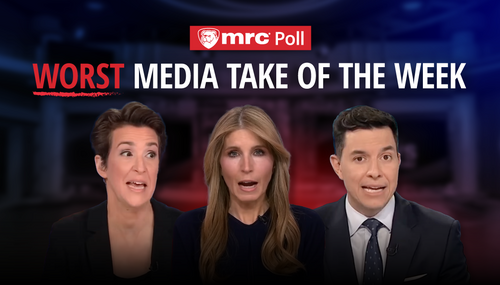Snopes is having its time in the spotlight in Monday’s New York Times, as reporter David Streitfeld pumped up the famous “fact-checking” website on the front of Business Day. Snopes’ profile is rising with its new relationship with Facebook, but as the site has waded more into politics, it’s getting a liberal reputation, and allegations of hypocrisy have been raised.
But Streitfeld dismissed any concerns as desperate conservatives lies, in “Bigger Fact-Checking Role for Snopes Brings More Attacks.” And his fellow Snopes-fawner, colleague Jeremy Peters, accused conservatives of crying "fake news" to discredit the mainstream media.
Streitfeld wrote from Snopes HQ in San Diego:
The last line of defense against the torrent of half-truths, untruths and outright fakery that make up so much of the modern internet is in a downscale strip mall near the beach.
....This is where the muddled masses come by the virtual millions to establish just what the heck is really going on in a world turned upside down.....
One way to chart Snopes’s increasing prominence is by measuring the rise in fake news about the site itself. If you believe the internet, the founder of Snopes, David Mikkelson, has a longer rap sheet than Al Capone. He was supposedly arrested for committing fraud and corruption and running a pit bull ring. In the wake of a deal that Snopes and others made this month to start fact-checking for Facebook, new slurs and allegations poured forth.
The underlying message of these spurious attacks is that the movement to fact-check the internet is a left-wing conspiracy whose real goal is to censor the right, and therefore must be resisted at all costs.
....
Starting about two years ago, Snopes made an effort to professionalize itself. It added a dozen staff members just in time to become the go-to debunking site for an election full of venom. The number of unique users jumped 42 percent over 2015, peaking at nearly 2.5 million the day after the election.
Jeremy Peters also got on board the emerging Snopes bandwagon in “Wielding Claims of ‘Fake News,’ Conservatives Take Aim at Mainstream Media.”
The C.I.A., the F.B.I. and the White House may all agree that Russia was behind the hacking that interfered with the election. But that was of no import to the website Breitbart News, which dismissed reports on the intelligence assessment as “left-wing fake news.”
....
Until now, that term had been widely understood to refer to fabricated news accounts that are meant to spread virally online. But conservative cable and radio personalities, top Republicans and even Mr. Trump himself, incredulous about suggestions that that fake stories may have helped swing the election, have appropriated the term and turned it against any news they see as hostile to their agenda.
In defining “fake news” so broadly and seeking to dilute its meaning, they are capitalizing on the declining credibility of all purveyors of information, one product of the country’s increasing political polarization. And conservatives, seeing an opening to undermine the mainstream media, a longtime foe, are more than happy to dig the hole deeper.
Peters protests too much. Rolling Stone and The Washington Post are not immune to bogus reporting. The Times went all-in on the made-up liberal narrative of racist Duke lacrosse players guilty of raping a stripper. One more recent example of “fake news” from the NYT: Its utter gullibility (and failure to follow up) in swallowing the claims of YouTube hoaxer Adam Saleh, allegedly removed from a Delta plane in London for speaking Arabic on his phone, a tale which conveniently played into the paper’s narrative of Islamophobia but which has been declared false by -- guess who? -- Snopes.
The paper’s naive portrayal of Jill Stein’s doomed-from-the-start recount, and its push for an Electoral College election turnover that was also never to be, qualify in the wishful thinking category of “fake news.”
Journalists who work to separate fact from fiction see a dangerous conflation of stories that turn out to be wrong because of a legitimate misunderstanding with those whose clear intention is to deceive...
More love for Snopes:
“Fake news was a term specifically about people who purposely fabricated stories for clicks and revenue,” said David Mikkelson, the founder of Snopes, the myth-busting website. “Now it includes bad reporting, slanted journalism and outright propaganda. And I think we’re doing a disservice to lump all those things together.”
The right’s labeling of “fake news” evokes one of the most successful efforts by conservatives to reorient how Americans think about news media objectivity: the move by Fox News to brand its conservative-slanted coverage as “fair and balanced.” Traditionally, mainstream media outlets had thought of their own approach in those terms, viewing their coverage as strictly down the middle. Republicans often found that laughable.
As with Fox’s ubiquitous promotion of its slogan, conservatives’ appropriation of the “fake news” label is an effort to further erode the mainstream media’s claim to be a reliable and accurate source.
“What I think is so unsettling about the fake news cries now is that their audience has already sort of bought into this idea that journalism has no credibility or legitimacy,” said Angelo Carusone, the president of Media Matters, a liberal group that polices the news media for bias. “Therefore, by applying that term to credible outlets, it becomes much more believable.”
Conservative news media are now awash in the “fake news” condemnations. When coverage of Mr. Trump’s choice for labor secretary, Andrew F. Puzder, highlighted his opposition to minimum wage increases, the writer and radio host Erick Erickson wrote that Mr. Puzder should have been getting more credit for pointing out that such increases lead to higher unemployment. “To say otherwise is to push fake news,” he wrote. (The effects actually have been found to vary from city to city.)
Apparently only Snopes and the liberal media are allowed to fact-check.
Others see a larger effort to slander the basic journalistic function of fact-checking. Nonpartisan websites like Snopes and Factcheck.org have found themselves maligned when they have disproved stories that had been flattering to conservatives.
On the other side of those pristinely objective fact-checkers at Snopes, are “highly partisan conservatives” who dare think they can do the same thing, like Sean Hannity and Michelle Malkin.
There are already efforts by highly partisan conservatives to claim that their fact-checking efforts are the same as those of independent outlets like Snopes, which employ research teams to dig into seemingly dubious claims.




